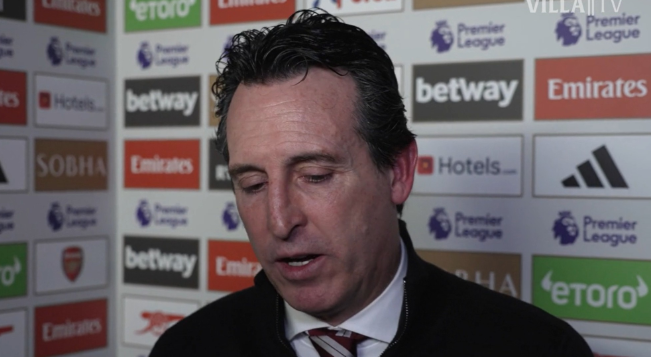
Italy suffered another setback in the play-offs for the World Cup qualifiers, failing to qualify for the World Cup for the second consecutive time, and even more poignantly, this time being eliminated at their own doorstep by the comparatively weaker North Macedonia. For the fans, this is undoubtedly an unbearable blow. However, Mancini's failure to lead his team over the line this time around, as opposed to his woeful exit in the play-offs four years ago, is not a crime that can be blamed on a blanket basis. Here is a detailed analysis of this:
(Mancini. Image source: goal)
1. A winning record, third place in the UEFA Europa League and winning the Europa League Cup
The direction in which Roberto Mancini has taken over as head coach of the Italian national team is clearly visible in the transformation of the team. In Italy's two matches against Sweden in the European play-offs for the 2018 World Cup, Verratti and Jorginho were the central midfielders in one of the matches respectively. Mancini cleverly put these two midfielders with outstanding organizational skills on the field at the same time, enhancing the team's ball control ability, supplemented by Barella, who has excellent running ability in the midfield, making the team's defensive ability in the midfield significantly improved.
Despite playing a 433 formation, on the attacking end, the left back transforms into a left wingback, creating a three center back position. With Spinazzola or Emerson on the pitch, Italy's stance was clearly to the left. This formation helped Italy perform well in the European Cup, becoming the first country in history to win all three group stage matches with zero goals conceded, and winning the knockout stage by beating the three strongest teams, Belgium, Spain and England, in consecutive matches.
Of course, some have pointed out that Mancini's Italy relied heavily on penalties to win against Spain and England, and that there was an element of luck involved. This is indeed hard to deny in a power match, where only the country with both strength and luck can win the title. This also explains why the World Cup and European Cup titles carry so much gold. International honors mean a lot to footballers, and it's hard to attribute the successive victories over Spain and England to luck, especially when Italy's attacking core, Spinazzola, is injured.
(Italy wins the European Cup. (Photo credit: nytime)
2. Jorginho's penalty kick error not the coach's sole responsibility
Italy's drop into the survival playoffs was due in large part to injuries and a dip in players' form after the Europa League, which led to only 1 win and 4 draws in their post-Europa League World Cup qualifiers. Crucially, failing to win either of the two matches against Switzerland, Jorginho was given the chance to take the winning penalty in both matches, but failed to score on both occasions, with one being confiscated by Swiss keeper Sommer and the other kicked straight away.
Penalty kicks are not easy to take, especially when the pressure is on to take the penalty in a crucial game. However, it is not common for the same player to miss two consecutive penalty kicks against the same team. In the matter of penalty kicks, the only thing a coach can do is to assign a player, and whether or not a goal is scored is hardly something the coach can decide, nor is it a tactical design that can change the outcome. Although one can question why Mancini had to let Jorginho take the kick the second time around, Jorginho himself is a strong penalty kicker, and it doesn't seem outrageous to choose to trust him again. If the temporary substitution results in a missed kick, public opinion may once again review why the penalty taker was removed.
(Jorginho concedes a penalty. Photo credit: dailymail)
3. A fair performance in the additional matches, but unfortunately lost to the World Cup.
Fans who watched the game on that day know that the Italian team actually didn't play badly, and the players' form has improved significantly compared to that after the European Cup. With Spinazzola and Chiesa missing due to injuries, Italy still relied on their team strength and cooperation to create a lot of goal scoring chances. 32 shots on goal vs. 5 in North Macedonia and 16 corners vs. 0, such a difference is quite obvious.
However, the charm of soccer lies in scoring. When you are unlucky, even if you have more shots on goal, it is difficult to convert them into goals. Let's think back to Italy's goal in the UEFA Cup final. From a corner kick, Bonucci from the far post picked up the ball and kicked in the crucial equalizer, and that goal could be said to have been a lot of luck, as the ball happened to fly towards the Italian player's side. However, in the match against North Macedonia, no matter whether it was a sports shot or a set piece, the bouncing ball did not have the same luck as it did at that time. Instead, it was unfortunate that the opponents hit a superb dead-end long-distance shot from a chance that was not a chance to be shut out by a superb world wave.
(Chiesa injured. (Photo credit: cbssports)
4. Injury-riddled, with Spinazzola and Chiesa missing their two big breakthroughs
After the Europa League matches, everyone got to know Spinazzola and Chiesa. Spinazzola is an indispensable role in Mancini's tactics, with his back-heeled assists and excellent sense of rhythm, being able to lay off and cut inside, and after he cuts inside, he can choose to either shoot himself or make quality passes. The Europa League relied on his passes to assist Chiesa to knock the opponent's door open in the round of 16 against Austria.






























